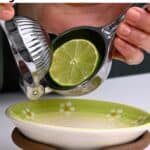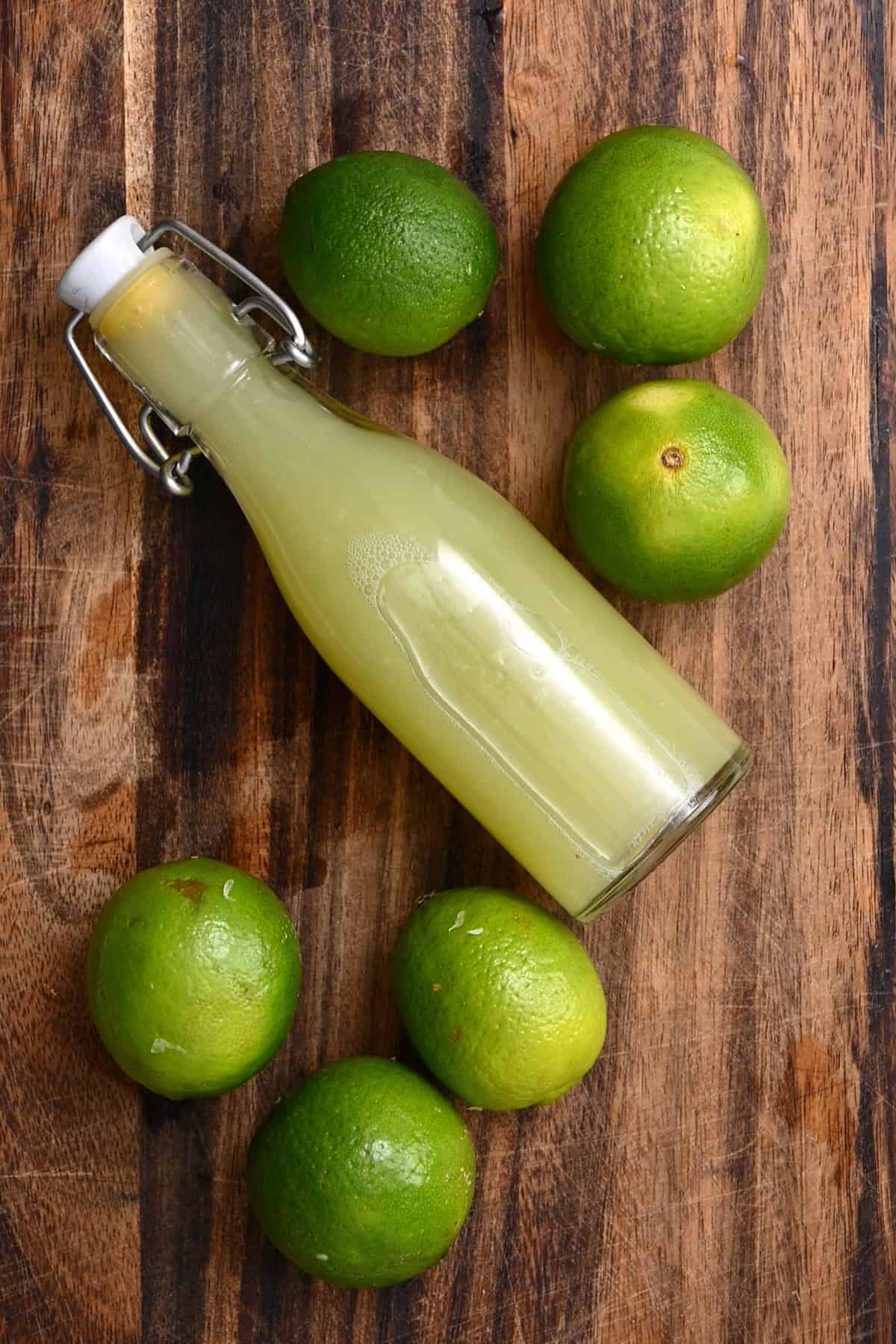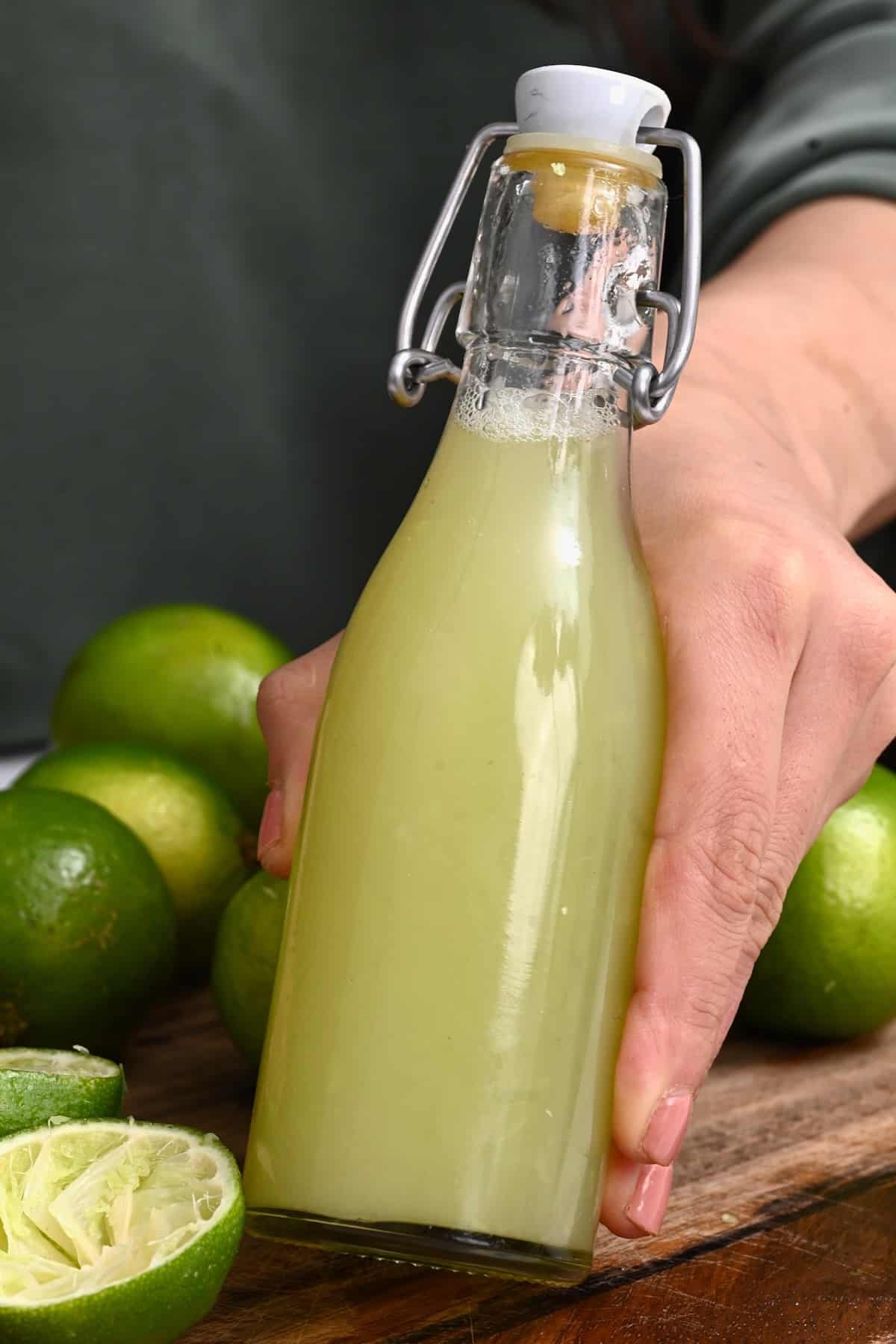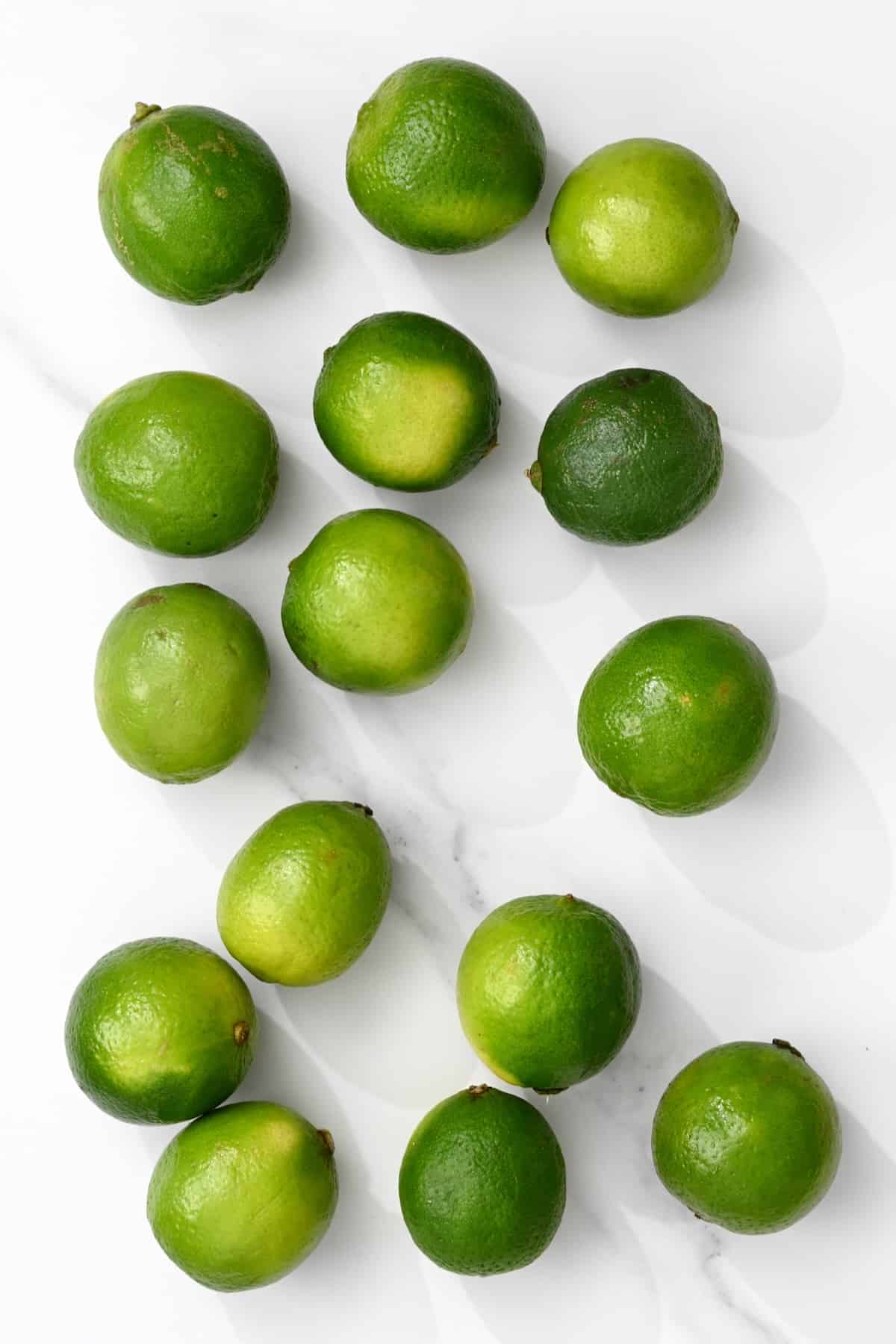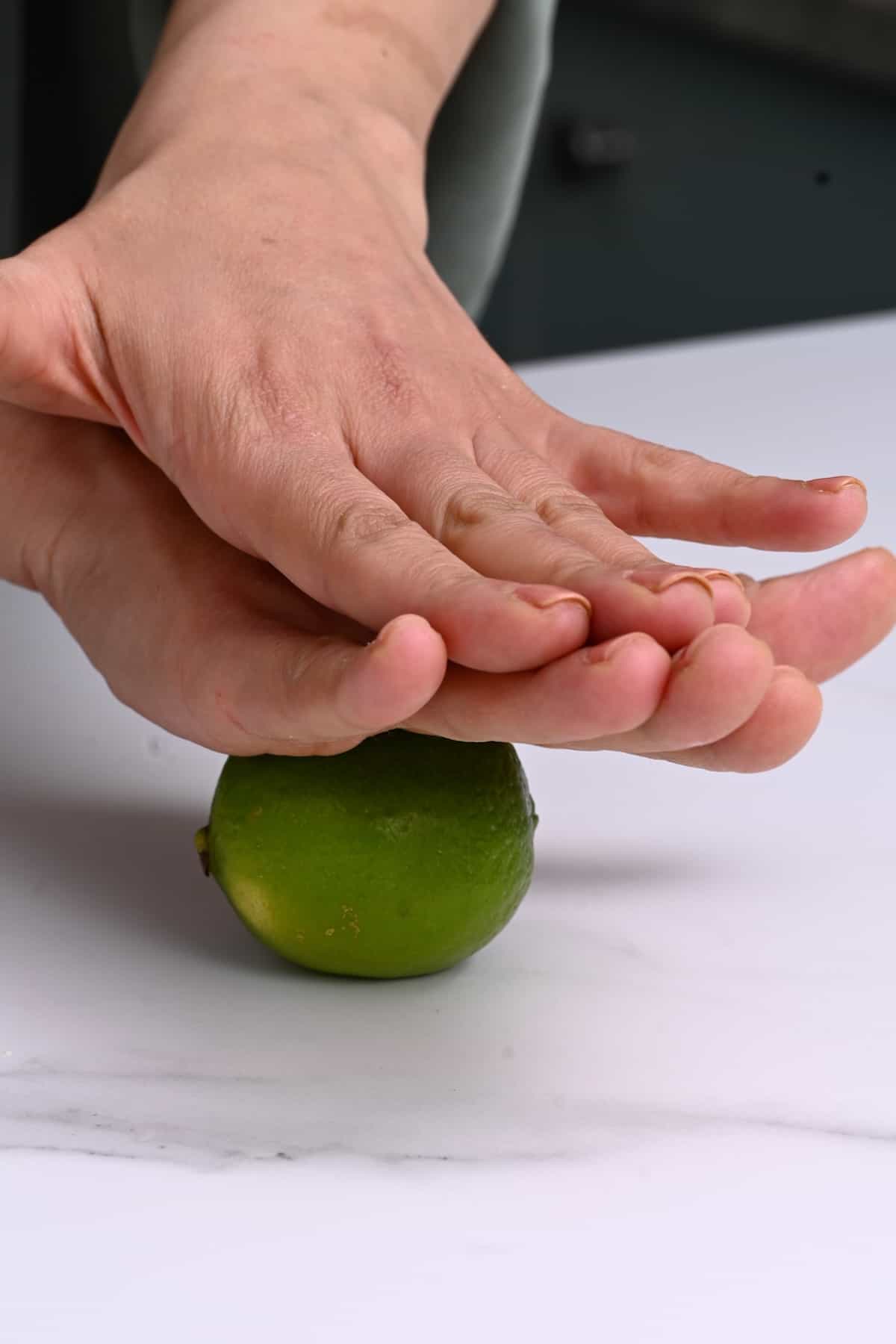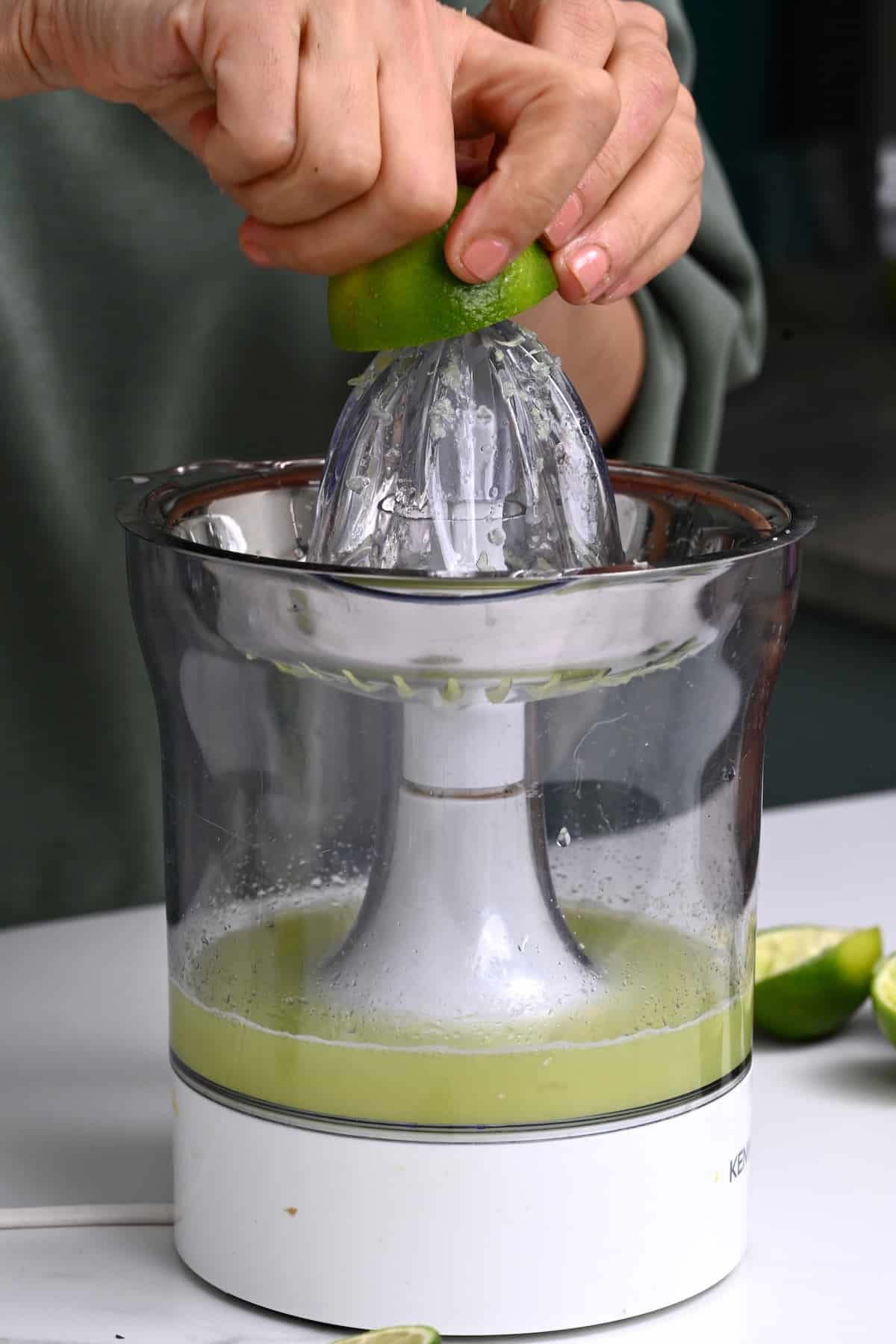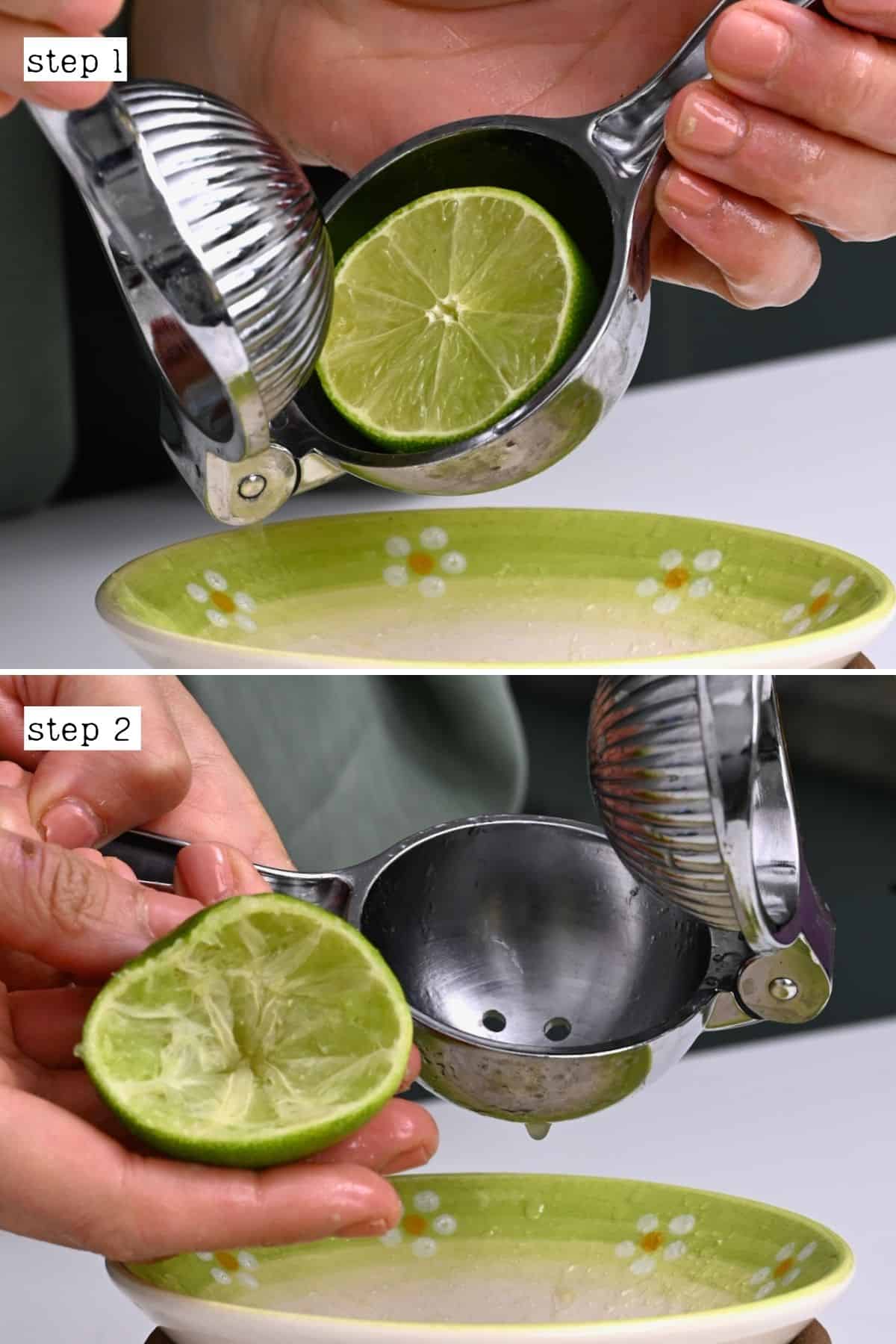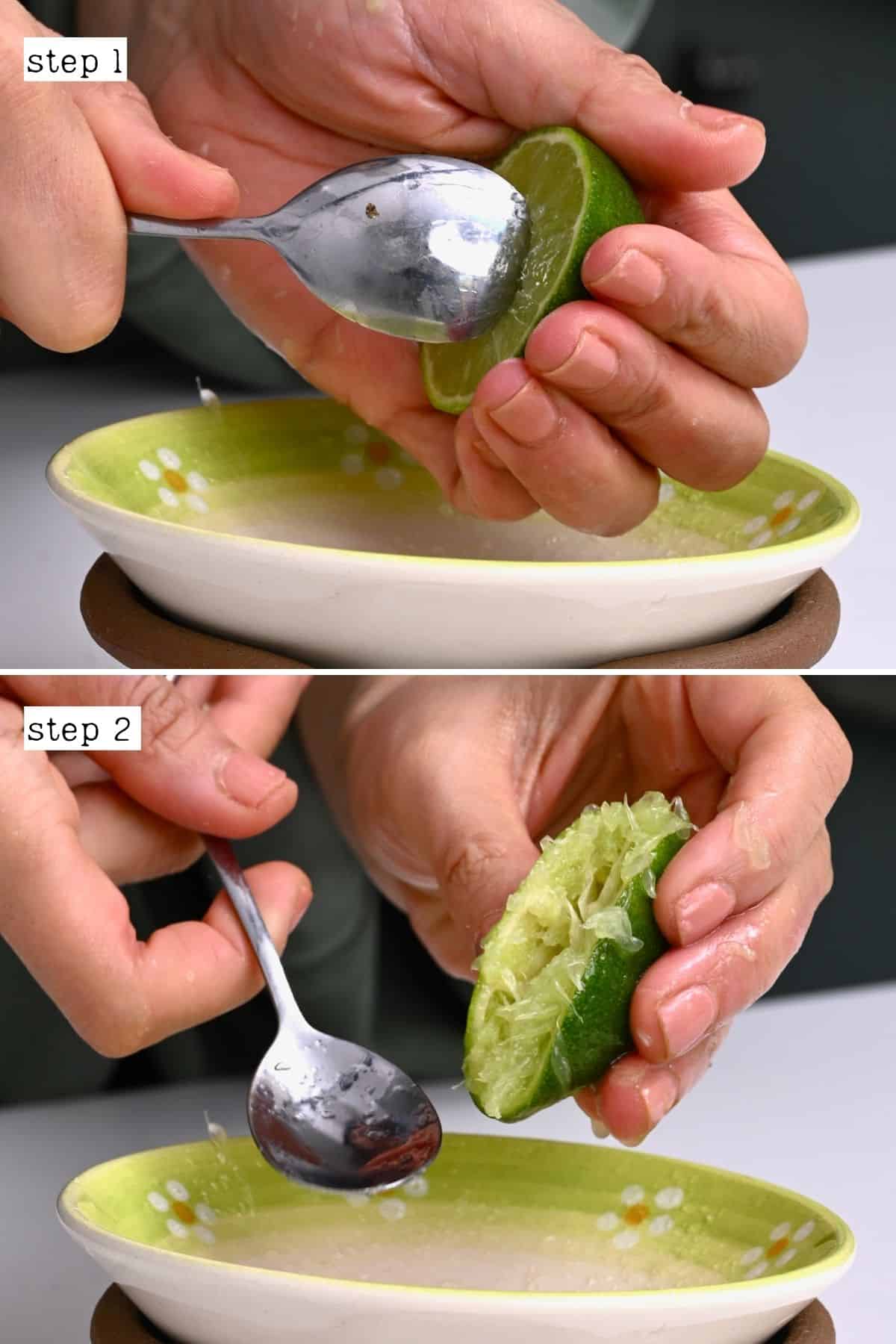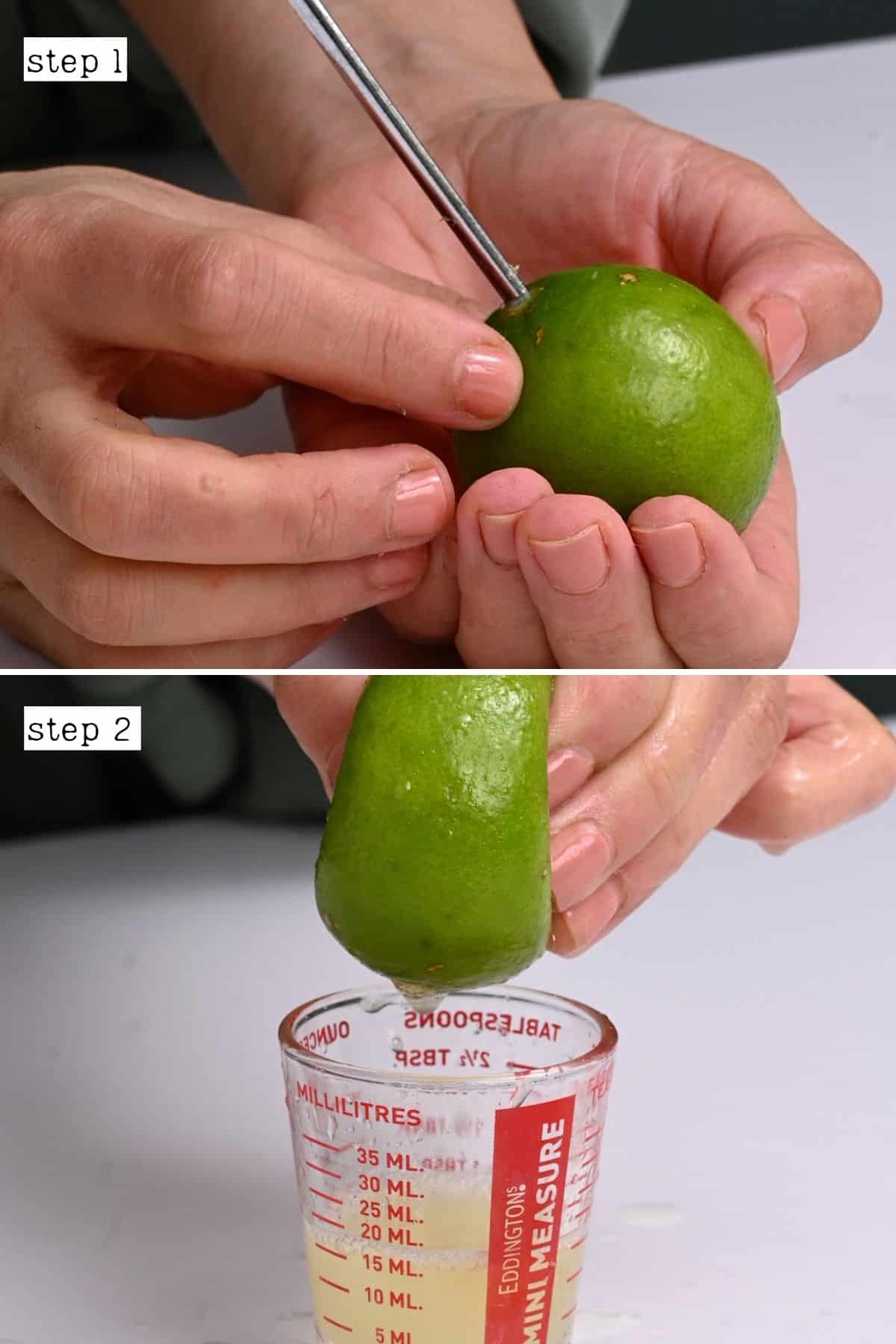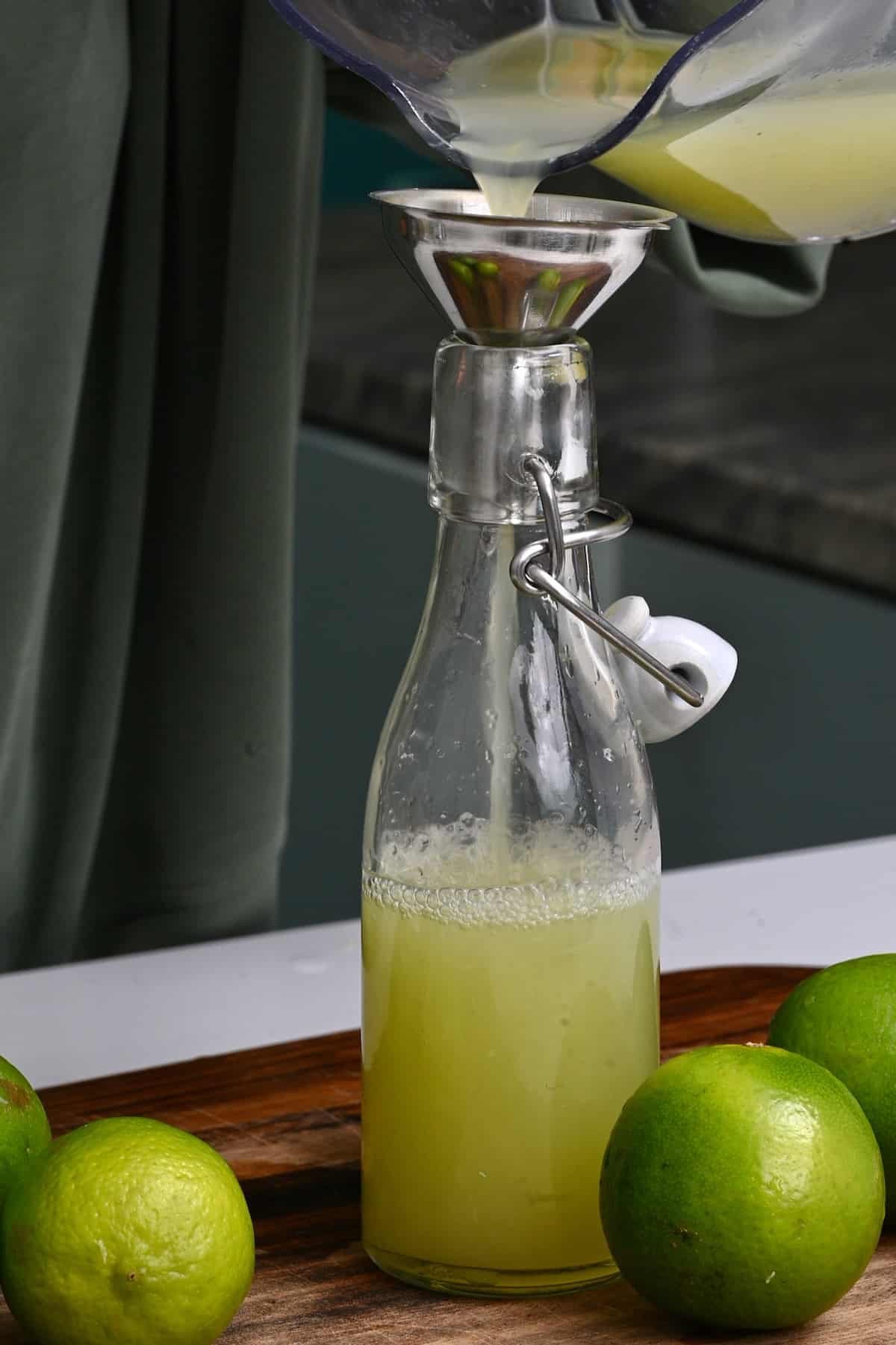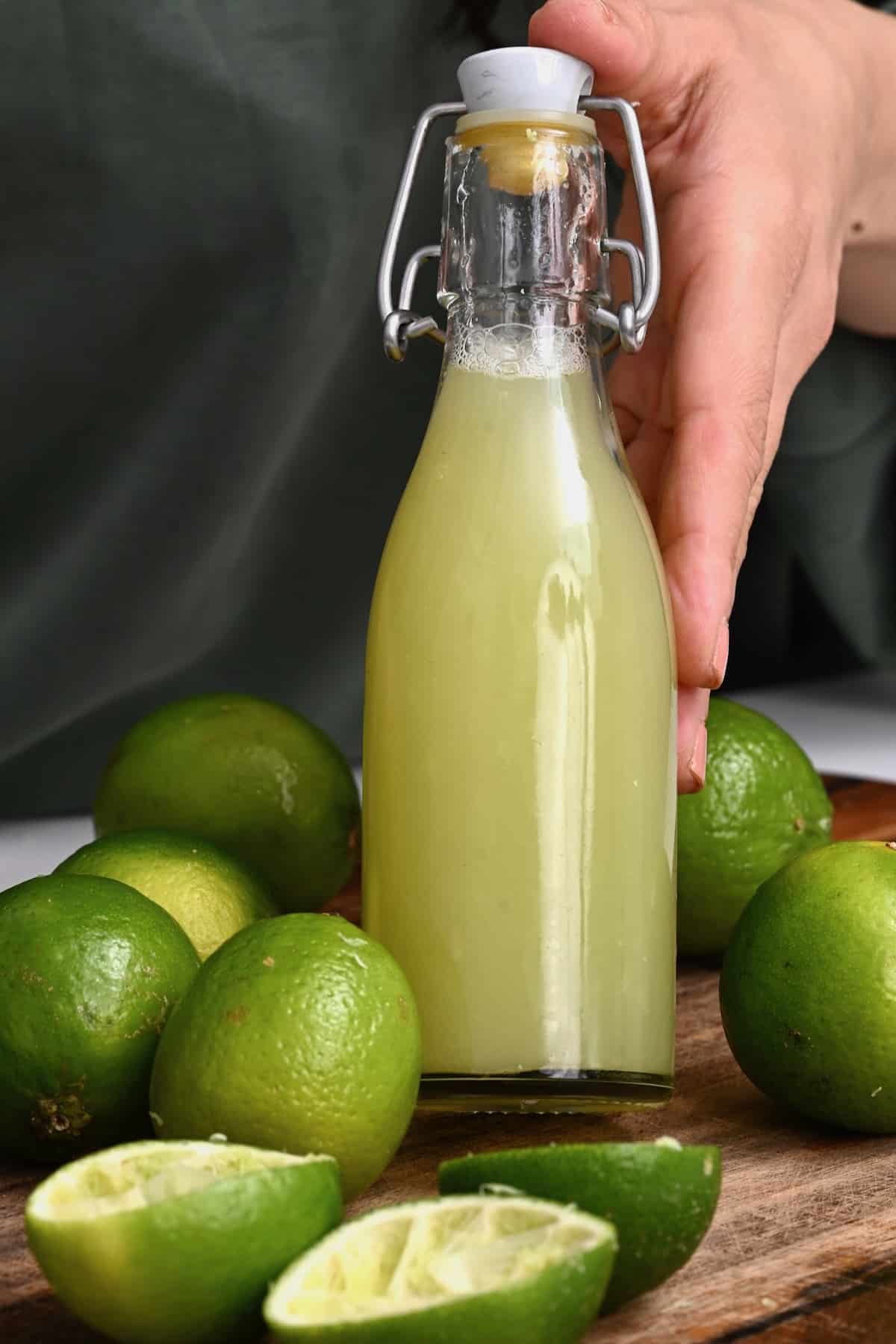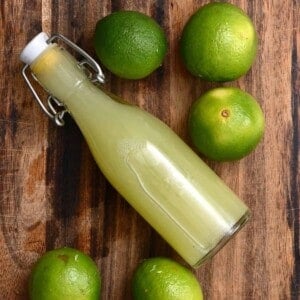Fresh lime juice is zingy, refreshing, and perfect for making pineapple limeade, adding to cocktails, mixing into desserts (like cheesecake and tarts), drizzling over protein pancakes, and more! It’s also a great addition to salad dressings (like this strawberry vinnaigrette) and marinades. So really, there’s no shortage of ideas to use this zingy ingredient.
Lime juice benefits
Limes are packed with vitamin C, several flavonoids, and antioxidants. All of which are beneficial for:
Collagen and skin health To boost immunity Prevent kidney stones Reduce the risk of heart disease Aid iron absorption Reduce the risk of several cancers.
What’s needed
Limes: use unwaxed organic limes whenever possible. That way, you can use the zest, too, and there’s no need to go through the extra steps of removing the wax layer first.
If you’re using waxed limes, you can easily remove this wax layer by placing the fruit in a large bowl of hot water for several seconds and then scrubbing them with a vegetable brush. I always recommend zesting citrus before juicing them, as it’s far easier beforehand.
The tools: learn how to juice limes with several tools, including: An electric juicer Manual citrus reamer A fork or spoon A stand mixer A skewer By hand (with the help of a microwave/freezer).
You’ll also need a sharp knife and a cutting board.
How to juice limes with and without a juicer?
No matter which of the below methods you use for lime juice, here are a couple of tricks for how to get the most juice out of lime (and most citrus fruits). These include: Make sure to also always work with room temperature limes, as they’ll be softer, so easier to juice.
Electric citrus juicer method
This method is best for large quantities (like if you’re making tons of limeade), using an electric “reamer” style juicer. Most electric citrus juicers naturally filter the pulp/seeds from the fresh lime juice.
Citrus reamer/handheld citrus squeezer
You can purchase several types of manual citrus juicers, including tabletop juicers that contain a little bowl/container to filter and contain the juice. Alternatively, you can buy hand-held metal or wooden reamers only or hinge-based juicers you’ll need to juice into a container and strain yourself. No matter which type of juicer you’re using, you can take a couple of extra steps to get the most juice out of the limes. First, microwave the lime/s for 20 seconds and roll them back and forth against your kitchen counter to loosen up the membranes.
Fork or spoon method
If you don’t have a specific juicing tool, a fork or spoon can be used with impressive results.
Stand mixer method
This method is a love-hate option. By beating the lime halves, skin-and-all, you get more oils from the zest (if you haven’t zested them already) in the juice. However, it’s slightly messier than other methods.
Skewer method
If you’re looking for a way of juicing limes without cutting them open, this skewer method may be for you.
Freezer method
When freezing whole limes, the membranes expand and break. Upon thawing, that leaves you with super juicy limes that are super easy to squeeze.
How to store limes
One of the most common topics I received questions on regarded storing limes. How long do limes last? Can you freeze limes? How to freeze limes? Etc. So, let’s take a look at the best ways to preserve this fruit, whole, in slices, and the fresh lime juice/zest. Do limes need to be refrigerated? If you plan to use them within 5-7 days, not necessarily. However, you will extend their shelf life by storing them in the fridge. To do so, I recommend storing them in a Ziplock bag (to stop them from drying out) in the crisper drawer. That way, they can last between 3-4 weeks! Can you freeze limes? Absolutely. There are several ways that you can freeze limes in the freezer. These include whole, in wedges, or slices. No matter which you choose, make sure to first wash them well and thoroughly dry them, too.
Whole limes
Place the limes in a reusable silicone freezer bag and label it with the use-by date. This way, you can store them for up to 12 months, though they are best within 6 months. To defrost them, you can place them in the refrigerator overnight, keep them in the bag in a bowl of cold water for 15-20 minutes, or run them under warm water for 1-2 minutes. Alternatively, microwave them for just a few seconds.
Wedges and slices
Chop the fruit into your desired shape – wedges or slices (don’t cut the slices too thin) – and then place them on a parchment paper-lined baking tray, not touching. Flash freeze until solid (30-60 minutes). Then, transfer the pieces to a Ziplock style bag, label, and store. Cut limes stored properly in the freezer will last up to 6 months. Just note that they will become very soft upon thawing. For that reason, frozen limes are best for juicing, adding to drinks, or cooking. Allow the frozen lime/s to thaw in the refrigerator overnight. The wedges/slices could be added to drinks from frozen, too.
How long does lime juice last?
Fridge: store the fresh lime juice in an airtight container/jar in the refrigerator for 2-3 days. It will become more bitter over time, so freezing is best to store it for longer than a few days. Freeze: you can pour the juice into a freezer-safe container, leaving ½-inch headspace. Alternatively, portion the juice into an ice cube tray (in 1-2 tablespoon portions). Store for up to 3-4 months. You can allow the frozen juice to thaw in the refrigerator or simply pop an ice cube or two (or however many are needed) straight into your recipe of choice (like lemonade).
Lime zest
You can zest limes using any of the methods mentioned on my post how to zest lemons. Once zested, it’s best to use it immediately or transfer it directly to the freezer. It will dry out in the fridge if left for more than a day or two. Freezer: either pack tightly (in 1 teaspoon or tablespoon portions) in ice cube trays or scoop into a reusable Ziplock bag (excess air removed). Freeze for 2-3 months; after that, they’ll begin drying out. Leave the zest to thaw at room temperature (it thaws quickly), or use it directly in your recipe (if heat is involved). Note that you can also zest whole limes directly from the freezer! So you may prefer to store them whole. You can also refer to this lemon zest post for tons of ways to use lime zest and this lemon juice post for how to use the peel/pith too!
Other juice recipes
Apple Juice Orange Juice Watermelon Juice (4 methods) Cherry Juice (Multiple Methods) Peach Juice (Peach Nectar | 2 Methods) Easy Fruit Punch
If you try one of these methods for how to juice limes, I’d love to hear your thoughts/questions below. Also, I’d appreciate a recipe card rating below, and feel free to tag me in your recipe recreations on Instagram @Alphafoodie!
